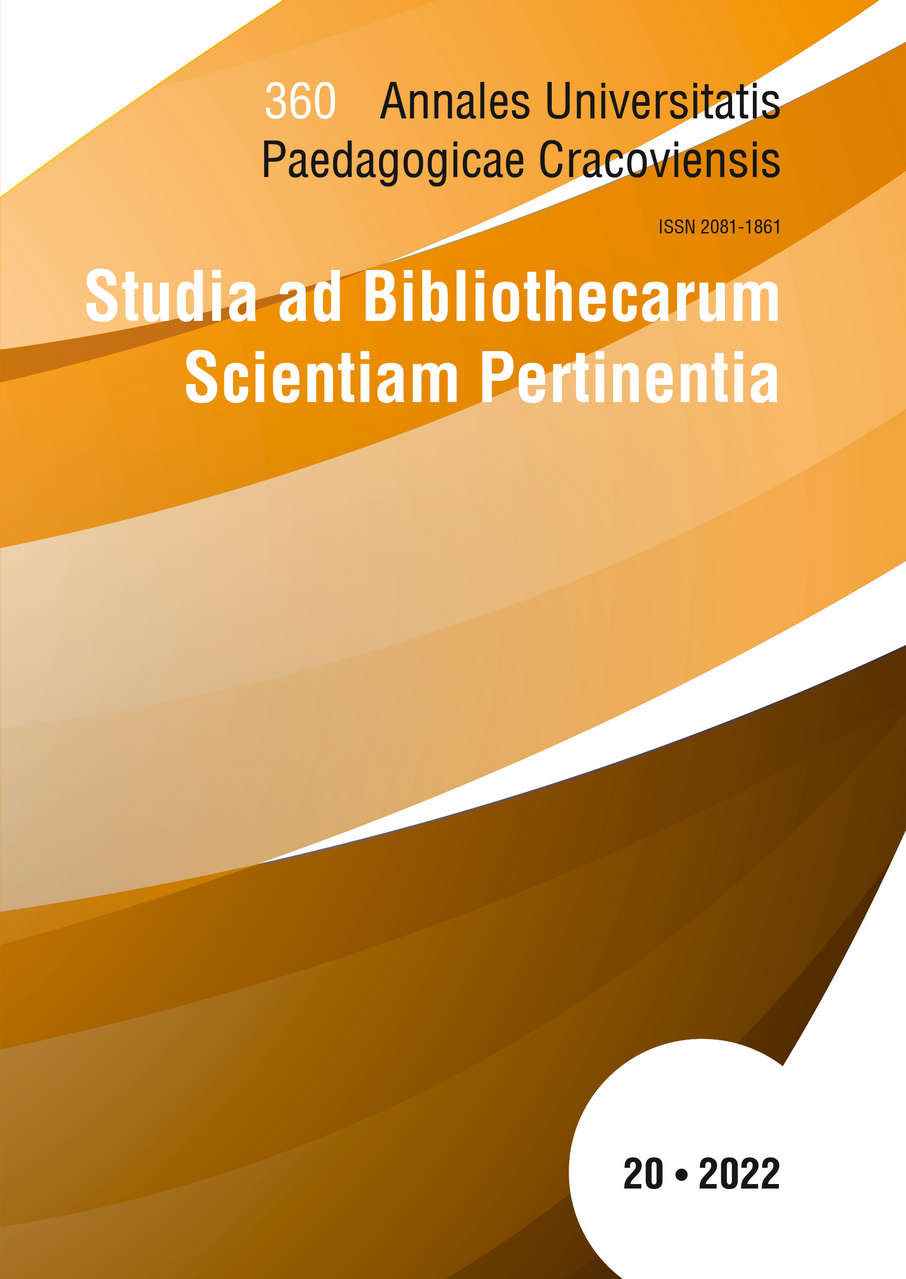Saving the national heritage from harmful microbiological effects. Conditions and preventive measures
DOI:
https://doi.org/10.24917/20811861.20.19Keywords:
national heritage, library collections, library climate, disinfectionAbstract
This article aims to present the physicochemical methods and chemical agents used to com-bat microorganisms in library collections as well as in library rooms. Based on an analysis of documentation available at various library centres, the methods and chemicals used to destroy fungi and moulds were compared. The standard storage conditions of library collections were used. Library collections from different sources can be attacked by microorganisms because they are almost entirely composed of organic materials, forming nutritional matter for those organisms. Environmental supervision is only one of many ways to prevent and ensure proper book storage conditions, but it is not a suitable method for fighting bacteria, fungi, mould, etc. The ways and methods of library collections’ disinfection should be considered very broadly. Disinfection of the collection itself is not enough; this must be combined with disinfection of the storerooms and additionally the removal of all potential sources of infestation. Emphasis should be placed on the implementation of modern methods of destroying microorganisms which, of course, will not harm humans but will prolong the life of library collections. Moreover, libraries and warehouses should be equipped with appropriate equipment to maintain suitable climatic conditions.
References
Bangrowska (Bakalarz) A., Microbial assessment of the conservation status of the selected library collections from the Skałeczna Library in Kraków, “Zesz. Nauk. Wyż. Szk. Zarz. Ochr. Pr. Katowice” 2015, nr 1 pp. 30-37.
Bangrowska (Bakalarz ) A., Zagrożenia mikrobiologiczne zbiorów bibliotecznych, “Nowa Biblioteka” 2014, nr 1(14), pp. 165-170.
Disinfection chamber, [on-line:] http://www.bu.kul.pl/files/072/gfx/act/diagnostic_acne - 14.11.2021.
Fassatiova O., Grzyby mikroskopowe w mikrobiologii technicznej, Warszawa 1983.
Froehlich M., Attempts to use p-chloro-m-cresol and zinc pentachlorophenolate to protect eggshell paints from microbiological deterioration, Acta Universitatis Nicolai Coper-nici, “Humanistic and Social Sciences. History of Science and Conservation “ 1974, z. 5 (52), pp. 111-116.
Fulishima A., Titanium dioxide photocatalysis: present situation and future approaches, “Chimie” 2006, No. 9, pp. 750-760.
Grabińska A., Łoniewska A., Kańska Z., Atlas grzybów mikroskopowych, Warszawa 1990.
ISO Standard PN-ISO 11799: 2000, “Information and documentation -- Requirements for storage conditions for archives and libraries”.
Karbowska-Berent J., Kozielec T., Jarmiłko J., Brycki B., Attempts to use new biocides to disinfect historie paper, [in:] Library and archival collections - research and mainte-nance, Toruń 2010, pp. 183-197.
Krajewski A., Perkowski J., Witomski P., Means ofprotection of monuments - perspective of disinfection and disinfection of monuments by gamma rays, [in:] Conservation needs of sacred objects on the example of the Łódź region, Łódź 2005.
Perkowski J., Radiation technology in restoration and renovation works, “Renova-tions”,2000, No. 3 (14), pp. 12-17.
Podbielkowski Z., Rejment-Grochowska I., Skirgiełlo A., Spore Plants, Warsaw 1986, pp. 358-367.
Sobuck W., Maintenance of the support, “Chemical issues” 2013, pp. 129-130.
Sobucki W., Paper maintenance, “Chemical issues” 2013, p. 131.
Strzelczyk A., Microbiological destruction of library collections. Reasons and symptoms of destruction, “Library Studies” 1997, vol. 10, pp. 90-92.
Strzelczyk A.B., Karbowska-Berent J., Microorganisms and insects destroying monuments and their combat, [in:] North European Symposium for Archaeological Textiles X, Toruń 2004, pp. 105-116, 186-200.
Downloads
Published
How to Cite
Issue
Section
License
Copyright (c) 2023 AUPC Studia ad Bibliothecarum Scientiam Pertinentia

This work is licensed under a Creative Commons Attribution 4.0 International License.

